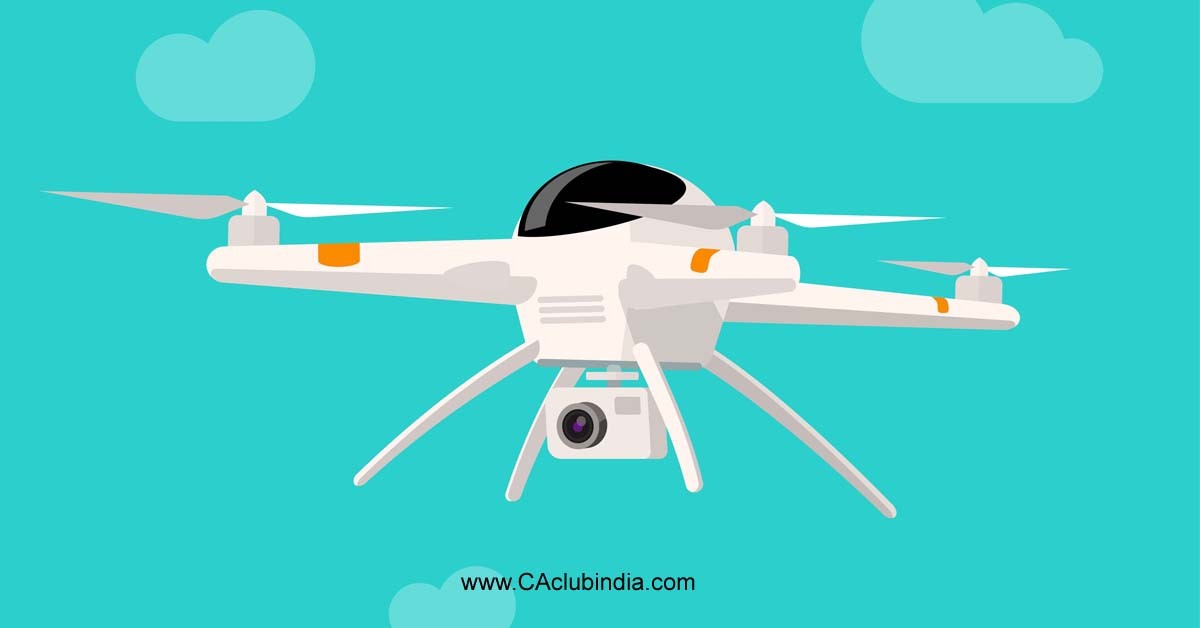The Central Gov on 15.09.2021, approved the Production-Linked Incentive (PLI) scheme for drones and drone components. It is step towards realising our collective vision of an Aatmanirbhar Bharat.
The PLI scheme comes as a follow-through of the liberalised Drone Rules, 2021 released by the Central Government on 25 August 2021. The PLI scheme and new drone rules are intended to catalyse super-normal growth in the upcoming drone sector. The aviation ministry expects drone manufacturing to attract investment of over Rs 5,000 crore in the next three years, generating over 10,000 direct jobs over the next three years. The ministry expects the annual sales turnover of the drone manufacturing industry to grow from Rs 60 crore in 2020-21 to over Rs 900 crore in FY 2023-24.

The PLI scheme covers a variety of drone components
- Airframe, propulsion systems(engine and electric), power systems, batteries and associated components, launch and recovery systems.
- Inertial Measurement Unit, Inertial Navigation System, flight control module, ground control station and associated components.
- Communications systems (radio frequency, transponders, satellite-based etc.)
- Cameras, sensors, spraying systems, and related payload, etc.
- 'Detect and Avoid’ system, emergency recovery system, trackers, etc., and other components critical for safety and security.
TOP 13 FEATURES OF THE PLI SCHEME FOR DRONES
- The total amount allocated for the PLI scheme for drones and drone components is INR 120 crore spread over three financial years. This amount is nearly double the combined turnover of all domestic drone manufacturers in FY 2020-21.
- The incentive for a manufacturer of drones and drone components shall be as high as 20% of the value addition made by her.
- The value addition shall be calculated as the annual sales revenue from drones and drone components (net of GST) minus the purchase cost (net of GST) of drone and drone components.
- The Government, has agreed to keep the PLI rate constant at 20%for all three years, an exceptional treatment given only to the drone industry. In PLI schemes for other sectors, the PLI rate reduces every year.
- The proposed tenure of the PLI scheme is three years starting in FY 2021-22. The PLI scheme will be extended or redrafted after studying its impact in consultation with the industry.
- The Government has agreed to fix the minimum value addition norm at 40% of net sales for drones and drone components instead of 50%, another exceptional treatment given to the drone industry. This will allow widening the number of beneficiaries.
- The list of eligible components may be expanded by the Government from time to time, as drone technology evolves.
- The Government has agreed to widen the coverage of the incentive scheme to include developers of drone-related IT products
- The Government has kept the eligibility norm for MSME and startups in terms of annual sales turnover at a nominal level - INR 2 cr (for drones) and INR 50 lakhs (for drone components). This will allow widening the number of beneficiaries.
- Eligibility norm for non-MSME companies in terms of annual sales turnover has been kept at INR 4 crore (for drones) and INR 1 crore (for drone components).
- The incentive payable to a manufacturer of drones and drone components shall be simply one-fifth of her value addition as illustrated below for a sample year (say, FY 2021-22):
- PLI for a manufacturer shall be capped at 25% of total annual outlay. This will allow widening the number of beneficiaries.
- In case a manufacturer fails to meet the threshold for the eligible value addition for a particular financial year, she will be allowed to claim the lost incentive in the subsequent year if she makes up the shortfall in the subsequent year.
Source: Release ID: 1755086
Disclaimer: Every effort has been made to avoid errors or omissions in this material. In spite of this, errors may creep in. Any mistake, error or discrepancy noted may be brought to our notice which shall be taken care of in the next edition. In no event the author shall be liable for any direct, indirect, special or incidental damage resulting from or arising out of or in connection with the use of this information.






 CAclubindia
CAclubindia
